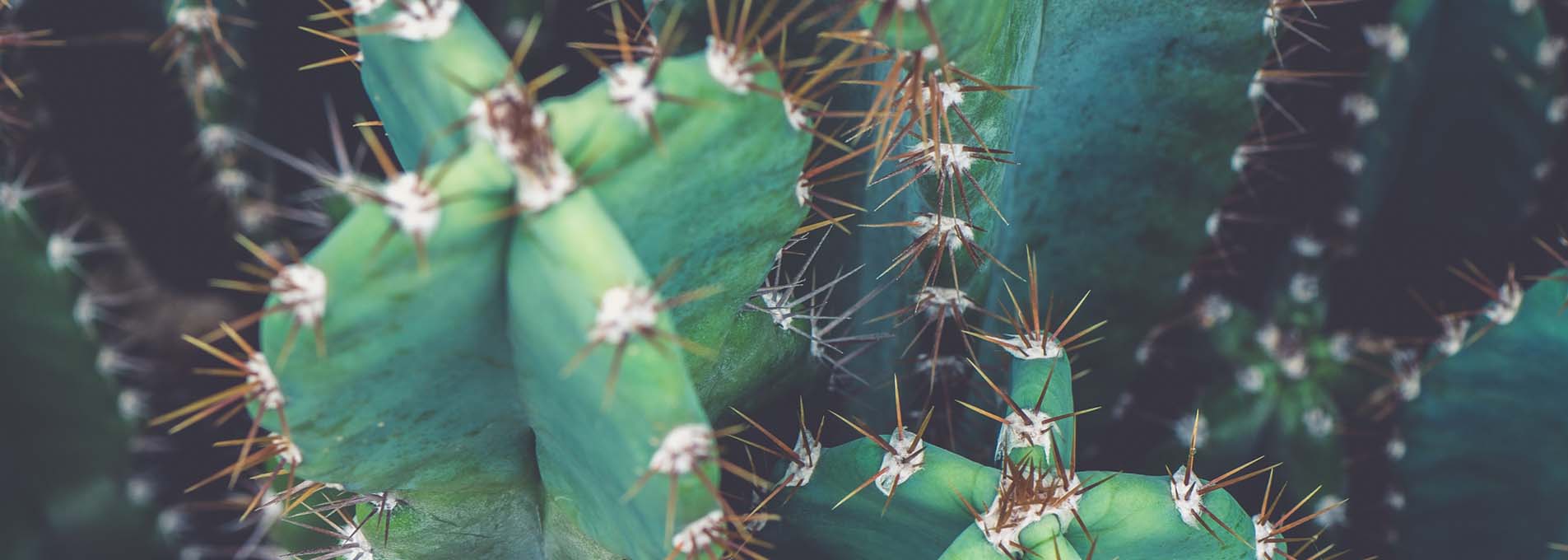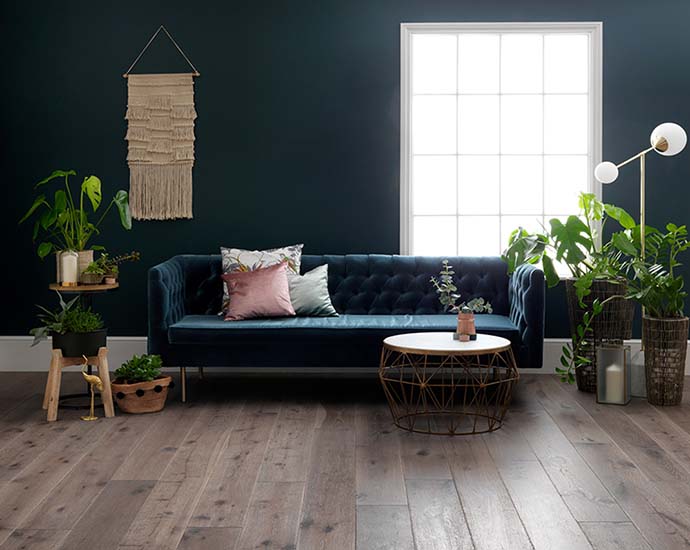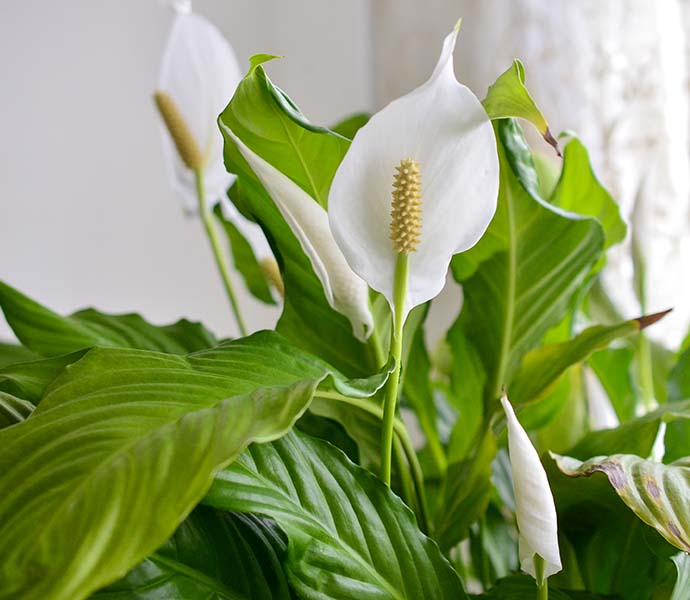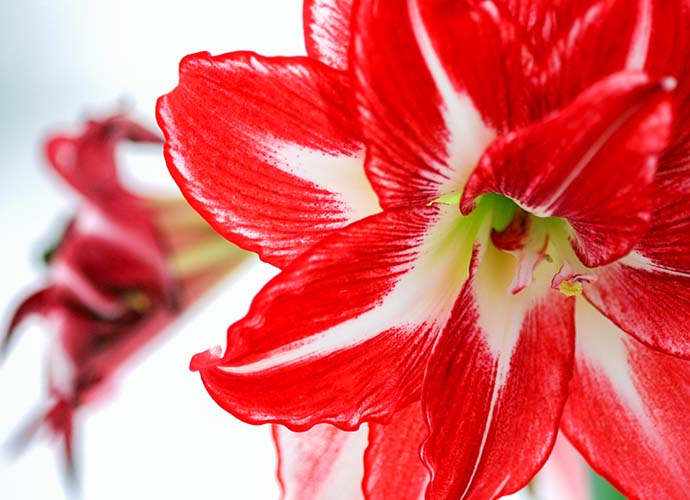5 Of The Best Indoor Plants for Autumn and Winter

indoor plants for autumn and winter
When the weather turns cooler and the nights get longer, many of us start spending more time at home. But at the same time, we naturally crave the calming influence of nature and the great outdoors.
Bringing houseplants into your home is a great way to add a natural aspect that makes it a more relaxing environment. It also taps into the interior decor trend for bringing the outdoors inside and will beautifully complement the natural good looks of your hardwood flooring.
But if you’re new to keeping indoor plants, low light and dry centrally heated rooms can make it difficult to care for them. So, it’s best to choose low-maintenance indoor plants which will cope well with Autumn/Winter conditions.
In this post, we’ve picked out five of the best indoor plants for Autumn and Winter along with some useful tips for how to care for them.

Monstera Deliciosa
Monstera deliciosa is one of the classic houseplants and is also known as the Swiss cheese plant due to the characteristic splits in its large leaves. As you can see in the image above, they combine well with other large plants to give a natural feel that really complements the Berkeley Calico Oak flooring.
These large indoor plants look very dramatic with their thick-stemmed vines which grow vigorously in Spring and Summer. You may find that they need to be supported by a stake, but Monsteras don’t need any other special care, so they are great indoor plants for beginners to grow.
They are tropical plants so will thrive in warmer temperatures and they like indirect sunlight so shouldn’t have any problem with the lower light levels in Autumn. Generally, they only need to be watered every 7-10 days but if you see any leaves turning yellow, that’s a sign that you are overwatering your plant. Monsteras don’t like sudden drops in temperature so be careful not to leave it in a cold draught.
Peace Lily

The glossy dark green leaves and dramatic white flowers of the Peace Lily (Spathiphyllum wallisii) make it one of the most popular houseplants. It’s an easy indoor plant to care for and looks good all year round.
Peace lilies like bright but indirect sunlight so give them a spot near a window, preferably in a South-facing room. But they will cope well with lower levels of light making them good plants for dark rooms and a great house plant for Autumn.
You should water them regularly to avoid wilting but if you see that your peace lily is looking a little limp, it will soon perk up after a good drink. Standing the pot on a saucer of pebbles with a little water will give your plant the humidity it loves and prevent your central heating from drying it out.
Peace lilies usually flower in Spring and their white hooded bracts can last for over a month. You may see some flowers in the Autumn months as well, and you just need to deadhead them when they’re past their best.
Cyclamen
Although they also grow outdoors in the summer, indoor cyclamen (Cyclamen persicum) are a popular house plant for Autumn thanks to their large, showy flowers and heart shaped leaves. They will thrive in a cool spot with plenty of natural light but avoid placing them in direct sunlight.
It’s important not to overwater cyclamen to avoid rotting, so always make sure that you water the plants from the base. When the compost feels dry, simply stand the pot in a shallow dish of water for an hour or so, letting the plant absorb what it needs.
Cyclamen flowers can be frilly or plain and come in a range of shades of red, pink and white. If you’re buying cyclamen in a garden centre, look for one with plenty of buds and you should have flowers for at least six weeks if you gently pull off any dead or dying blooms.
Your cyclamen will flower again next Autumn if you give it a dormant period with reduced watering after it has finished flowering.
Amaryllis

Amaryllis or Hippeastrums are some of the most dramatic indoor plants, bringing a glorious splash of colour to your home. Amaryllis flowers are grown from bulb and will last up to two weeks as cut flowers, creating a dramatic display for your home.
Planting bulbs in pots is an easy way to fill your home with Autumn colour as well as making a lovely gift idea at Christmas time. Simply plant the bulb in a heavy pot filled with good potting soil, so that around one-third of the bulb can be seen above the soil line. Place the bulb in bright indirect light and water it occasionally until you see around 5cm of growth. After that you should water it regularly, adding tomato food to encourage plenty of extravagant flowers.
Around 6-10 weeks after planting, your bulbs will begin to flower and you may need to use a stake to give the blooms a little extra support. Turning the pot every so often will help to encourage your Amaryllis to grow straight.
When they have finished flowering, the Amaryllis will naturally die back and you can simply store the bulbs to plant in Autumn next year.
Cacti and Succulents

If you’re not very confident with houseplants, cacti and succulents are a great way to bring some easy-care greenery into your home. The wide variety of shapes and colours combine well with other indoor plants to create a stunning display that highlights the warm tones of the Goodrich Barn Oak flooring above.
The different varieties have differing needs so some will rest in the Winter and flower in the Spring, while others will flower in Autumn after a Summer rest period.
Most cacti and succulents will sit happily on a bright, sunny window throughout the year but some forest-growing varieties like the Christmas cactus (Schlumbergera) need to be kept out of direct light.
You’ll find that the dry air caused by central heating isn’t usually a problem for these plants as long as you give them sufficient water to stop them from shrivelling. Summer flowering cacti can be left to rest without watering through the Autumn and Winter if they are in a cooler room, but any Winter flowering plants will need regular watering throughout the Winter. Make sure that their compost is thoroughly dry before watering and ideally use tepid rainwater rather than tap water to prevent a build-up of minerals in the soil – it’s also a great way to ‘recycle’ water rather than using fresh tap water!
A Note for Pet Owners…
Unfortunately, with the exception of certain succulents, all of these indoor plants are toxic for cats and dogs if they ingest the leaves, stalks, bulbs, or tubers. So if you have pets, you may prefer not to bring these plants into your home or ensure you keep them out of reach. Good alternatives for pet-friendly indoor plants include the spider plant, parlour palms, and ferns.
How to Care for Indoor Houseplants
Regular watering and access to light will help to keep your indoor plants looking healthy through the cooler months. Here are some top tips on how to care for indoor house plants:
Water Carefully
Although indoor conditions are good for most house plants, low light levels mean that many plants will grow less in Autumn and Winter so they will also need less water. Plants don’t like sitting in water so if your plant pots are in pot covers, check them 10 minutes after watering so that you can tip away any excess water.
Check Heat Levels
Indoor plants don’t generally like being too hot or too cold, so you need to find a pleasant medium for them. Avoid putting plants near hot radiators or on cold window sills behind curtains, and try to keep them out of draughts as well.
Humidity Matters
When you put your central heating on in Autumn, it can really make the air dry which can be a problem for some plants. If you have plants such as ferns, calatheas and orchids in your home, standing their pots on a tray of damp pebbles will help to raise the humidity in the air around them.
Turn up the Light
Most houseplants don’t like direct sunlight and will thrive in rooms that have indirect light. But natural light levels dip in the Autumn and Winter, so you might need to move some plants into a brighter spot to help them get through to the Spring.
Adding indoor plants to your home will bring a touch of the great outdoors in your home throughout Autumn and Winter, as well as complementing the natural beauty of your hardwood floors.
Subscribe to our Inspiration Journal for monthly style, trends, and news updates, or follow us on Instagram to see gorgeous interiors right on your feed.
